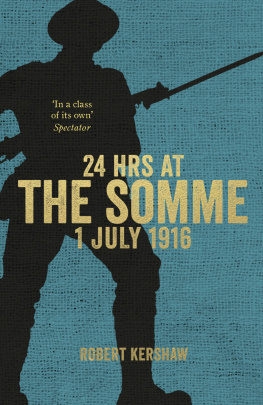High Wood
High Wood
Michael Harrison
First published in Great Britain in 2017 by
PEN AND SWORD MILITARY
an imprint of
Pen and Sword Books Ltd
47 Church Street
Barnsley
South Yorkshire S70 2AS
Copyright Michael Harrison, 2017
ISBN 978 1 47383 409 5
eISBN 978 1 47387 368 1
Mobi ISBN 978 1 47387 367 4
The right of Michael Harrison to be identified as the author of this work has been asserted by him in accordance with the Copyright, Designs and Patents Act 1988.
A CIP record for this book is available from the British Library.
All rights reserved. No part of this book may be reproduced or transmitted in any form or by any means, electronic or mechanical including photocopying, recording or by any information storage and retrieval system, without permission from the Publisher in writing.
Pen & Sword Books Ltd incorporates the imprints of Pen & Sword Books Ltd incorporates the imprints of Pen & Sword Archaeology, Atlas, Aviation, Battleground, Discovery, Family History, History, Maritime, Military, Naval, Politics, Railways, Select, Social History, Transport, True Crime, Claymore Press, Frontline Books, Leo Cooper, Praetorian Press, Remember When, Seaforth Publishing and Wharncliffe.
For a complete list of Pen and Sword titles please contact
Pen and Sword Books Limited
47 Church Street, Barnsley, South Yorkshire, S70 2AS, England
E-mail:
Website: www.pen-and-sword.co.uk
Acknowledgements
My sincere thanks to all those mentioned below as without their unstinting help and encouragement this book would never have seen the light of day.
Lee Harrison, whose idea for the book followed a dusty walk over the Somme Battlefield to High Wood.
Terry Carter (author of Birmingham Pals) for use of his research material relating to High Wood and his particular skills in locating features in the landscape around it.
Lynette and Mark Bentley for their skills and patience in proof reading, computing and, in particular, when the part-finished document was lost.
Tim Pierce and colleagues of Royal Air Force Cranwell College Hall Library, for their expertise and encouragement.
Rex and Lynn Gregson for the unlimited and long-term use of their extensive library and unfailing support.
Dr Spencer Jones, of the University of Wolverhampton, with his vast knowledge of the First World War and his willingness to allot time to a former student.
Professor Gary Sheffield, who spared time and expertise for a former student.
John Hamblin, of Lancing College in Sussex, for his permission to use material relating to Captain Harold Webb.
Charles Fair, for his permission (originally granted to Terry Carter) to use archive material relating to Major Charles Fair.
Major John Pratt, a true soldier, never downhearted and who can read the war from a map like no other.
Doctor Christopher Pugsley, author of Haig and the Implementation of Tactical Doctrine on the Western Front. Irene Moore for her editing, guidance and supreme patience.
Finally, the person who drove this project in all its aspects: Mrs Joyce Harrison who never once baulked at any set back on the road to completion and pushed harder still when resolve might have flagged, and all without instituting divorce proceedings.
Introduction
High Wood
14 July 15 September 1916
Bois de Fourcaux (Pitchfork Wood) was known to the British Army on the Somme as High Wood, a name that has reverberated down the decades for its sinister reputation as the scene of some of the fiercest fighting in the British sector of the Anglo-French offensive of 1916. This series of actions undertaken over a period of approximately five months is now known to history as the Battle of the Somme. High Wood covers an area of 75 acres (a tiny fraction of the 120 square miles of the Somme battlefield) and stands brooding atop a rise 500ft above sea level in the undulating landscape of the Somme battlefield. All is peaceful now, but the long ago summer of the year 1916 witnessed a titanic struggle that took place when the soldiers of the British Expeditionary Force (BEF) crashed into those of Germany in the struggle for possession of High Wood.
High Wood has previously been the subject of various works in books and articles including The Hell They Called High Wood, a seminal work by the late Terry Norman which certainly repays the time of the reader. However, the kernel for our work came about when two members of a small party, Lee Harrison and Terry Carter, elected to walk from Bazentin-le-Grand to High Wood via the routes used by many of the attacking British troops in July 1916. Upon their eventual arrival at High Wood, dusty, bedraggled and thirsty, both walkers commented that they became ever more conscious of being under observation from the wood as they slogged across the rolling downland that had separated the British front lines from High Wood.
Following discussion, it was concluded that in the hands of a competent hostile army, High Wood was a killing machine; a machine that had to be neutralised before there could be any chance of success for the British in this sector of the Somme battlefield. With mounting levels of interest concerning Great Britains role in the First World War, and in particular the fighting on the Somme, Pen and Sword concluded that a book detailing the colossal effort made by the British Army to wrest control of the wood from its German occupiers would be both useful and informative to the battlefield visitor and also for those whose circumstances prevent them from travelling to this now quiet backwater of rural France. Here High Wood stands a lonely sentinel, keeping an eternal vigil over a landscape that witnessed scenes almost beyond comprehension or description.
Because of space limitations it will not be possible to describe the minutiae of two months of struggle for High Wood, due mainly to the complexity of wood fighting and the sheer number of battalions that took part. Dr G. Payne, in a 2008 article for the Western Front Association, calculated that sixty-four battalions, from forty-seven different regiments took part in the attacks on High Wood. For this reason the work has been divided into five chapters covering significant dates in the fighting for the wood during July, August and September 1916. Important and separate mining attacks that took place at High Wood are also included in the narrative.
The British Army was not on the Somme by accident or whim. Britain was allied to France and Belgium, both of whom had been invaded by Germany whose government proclaimed that the territory so gained was now German. The front lines facing west now constituted the German frontier, with the added intention to drive to the Channel and North Sea coastlines from where Britains trade and food lifelines would be disrupted and/or severed. Apart from appeasement, Great Britain together with France and Belgium had no other option but to expel the invader. It is neither our wish nor intention to re-open old sores, but unless history is truthful it is worthless.














